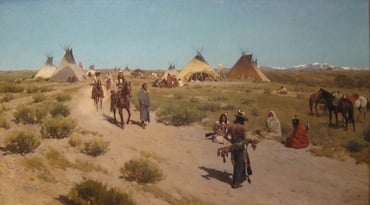Doctrine of the Lord # 28
28. The Son of man symbolizes the Lord in relation to the Word because prophets also were called sons of man. Prophets were also called sons of man because they represented the Lord in relation to the Word, and therefore they symbolized the doctrine of the church drawn from the Word. Prophets have no other meaning in heaven when they are mentioned in the Word. For the spiritual meaning of a prophet, as also that of the Son of man, is the doctrine of the church drawn from the Word, and when referring to the Lord it is the Word itself.
That the prophet Daniel was called son of man may be seen in Daniel 8:17.
That the prophet Ezekiel was called son of man may be seen in Ezekiel 2:1, 3, 6, 8, 3:1, 3-4, 10, 17, 25, 4:1, 16, 5:1, 6:2, 7:2, 8:5-6, 8, 12, 15, 11:2, 4, 15, 12:2-3, 9, 18, 22, 27, 13:2, 17, 14:3, 13, 15:2, 16:2, 17:2, 20:3-4, 27, 46, 21:7, 11, 14, 17, 19, 24, 22:18, 24, 23:2, 36, 24:2, 16, 25, 25:2, 26:2, 27:2, 28:2, 12, 21, 29:2, 18, 30:2, 21, 31:2, 32:2, 18, 33:2, 7, 10, 12, 24, 30, 34:2, 35:2, 36:1, 17, 37:3, 9, 11, 16, 38:2, 14, 39:1, 17, 40:4, 43:7, 10, 18, 44:5.
It is apparent now from this that the Lord in relation to His Divine humanity is called the Son of God, and in relation to the Word the Son of man.
Published by the General Church of the New Jerusalem, 1100 Cathedral Road, Bryn Athyn, Pennsylvania 19009, U.S.A. A translation of Doctrina Novae Hierosolymae de Domino, by Emanuel Swedenborg, 1688-1772. Translated from the Original Latin by N. Bruce Rogers. ISBN 9780945003687, Library of Congress Control Number: 2013954074.
Dwell

To “dwell” somewhere, then, is significant – it’s much more than just visiting – but is less permanent than living there. And indeed, to dwell somewhere in the Bible represents entering that spiritual state and engaging it, but not necessary permanently. A “dwelling,” meanwhile, represents the various loves that inspire the person who inhabits it, from the most evil – “those dwelling in the shadow of death” in Isaiah 9, for example – to the exalted state of the tabernacle itself, which was built as a dwelling-place for the Lord and represents heaven in all its details. Many people were nomadic in Biblical times, especially the times of the Old Testament, and lived in tents that could be struck, moved and raised quickly. Others, of course, lived in houses, generally made of stone and wood and quite permanent. In between the two were larger, more elaborate tent-style structures called tabernacles or dwellings; the tabernacle Moses built for the Ark of the Covenant is on this model.






